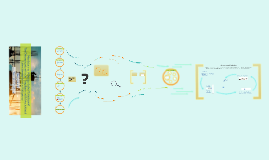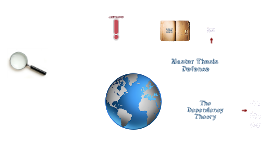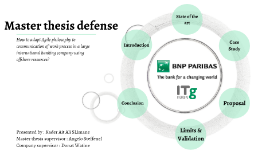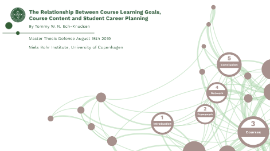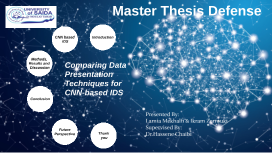Master Thesis Defense
Transcript: Master Thesis Defense Common points of Agreement: - World consisting of two kinds of states called “center/periphery”, “dominant/dependent”, or “metropolitan/satellite” states. -External forces are the most important factors when it comes to economic activities in the underdeveloped nations. -Each state has its own individual “clear, national economic interest”, which can only be satisfied by meeting the needs of the poor, and not the private interest of the elites and government Aim of the Thesis: - Better understanding and a clear overview of the dependency theory in general. - Discover the reasons of the evolution of the theory both in Latin America and Africa. - To reveal some of the consequences of the dependency thinking in the developing world. Poverty after decolonization Chilean sociologist HISTORICAL BACKGROUND General Definition: - A developmental theory from the 1950-60s. - The existence of a “core-periphery”, North versus South world system view. - Developed countries modernizing at the expense of under-un-developed countries. American-Marxist Economist Brazilian economist and socialist Research Methods: - Extensive review of current and short-past literature, including relevant books, academic articles, international organization program schedules and presentations. - Review of statistical data regarding the subject. I. 16th-19th century colonization introducing: - First the ideas of developmentalism, progress, and modernity, -Then the ideas of free trade, and national sovereignty Created By: Renáta Bacsó Mentor: Johannes Maerk Vienna, 2012.10.25 CHILE II. 20th century US slowly expanding over Latin America. III. Cardoso's "new dependency" evolving because of the technological dependency. MY CONCLUSION - Overdrawn attention given to capitalist imperialism -Typology of “exploiter and exploited” exaggeratedly simplifies the global world’s participants -Ignorant towards important internal factors like culture, and population demographics PAUL BARAN ANDRÉ GUNTER FRANK Enzo Faletto KENYA American political sociologist - Underdevelopment is a result of international capitalism. - Political, economical, and social structures of the poor states are shaped externally. - "Development of Underdevelopment" -Difference between “underdeveloped” and “undeveloped”. A need for a 2nd decolonization HISTORICAL BACKGROUND - "Economic Surplus" -Backwardness of countries is due to the misuse and waste of this surplus. -Critical approach towards colonialism. FOLLOW-UPS - Part of the region of "Africa of the labor reserves” - Holds features of "classical dependency" as well as "dependent development" - The economic system's road to independence. Efforts being made The Dependency Theory - The host country of ECLA -Experiment for the new reforms -Brief time of success, then huge decrease of growth -Frank's theory of a "satellite-metropolis" system was also based on a case study of Chile One big project for 3 different regions: (Samir Amin's division) - "Africa of the colonial economy" - “Africa of the concession-owning companies” - “Africa of the labour reserves” The Latin-American Perspective CRITICISM HISTORY OF THE THEORY - Modernization Theory: "evolutionary stages" of development Criticized not only by Dependency Theory, but: -World System Theory (as well): Only one kind of social system in the World -- The Capitalist World Economy. - Early 1950s, Santiago, Chile, ECLA - Raúl Prebish - First became popular as a critique Overview: - 1st theoretical part: main elements, protagonist and critical points. - 2nd applying part: Case studies from South-America and Africa. - Final Part: relevance of dependency theory today. PETER EVANS -"Associated dependent development"- Development IS possible withing dependency. - Typology of existing national societies. - 3 stages of economic history of the periphery. Thank you for Your Attention! FOLLOW-UPS 18th century colonization: - cheap labour, raw materials, and free land for industrialization - Africa as part of, but also the file-closer of the World economy -Rural areas, not valuable were ignored THE SUB-SAHARAN-AFRICAN PERSPECTIVE -Establishment of African Union - Announcement of NEPAD -Establishment of the Commission for Africa Fernando Henrique Cardoso - High hopes in the beginning - Negative turn in the 1970s -Forgotten in the 1990s 2 Eras of Dependency: -Radical Marxist influenced stream -Non-Marxist, Structuralist stream German-American Historian and Sociologist Wars and organized violence







